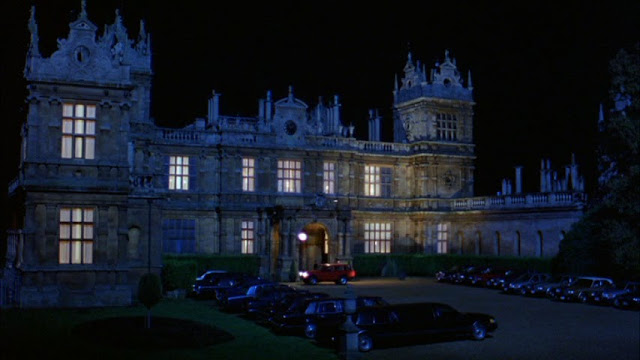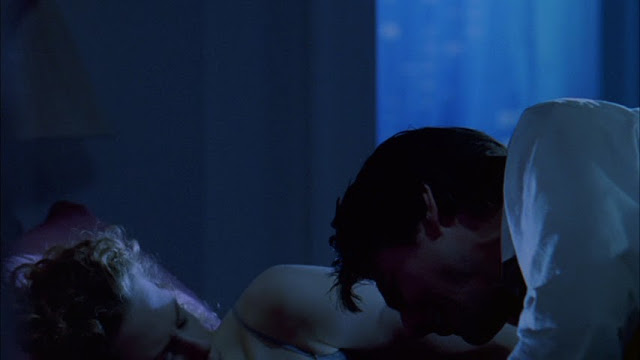



There is a button that links to this table of contents, at the bottom of each post in the analysis.
part 1 - Introduction and plot synopsis
part 2 - The hidden plot: Heywood Floyd is an alien
part 3 - The 'Dawn of Man' is set in Mexico, not Africa
part 4 - Bowman suffers a brain injury when he is 'ejected' from his EVA pod into the emergency airlock of Discovery One
part 5 - Hints from David Lynch; color symbolism; women in space as 'prostitutes'
part 6 - Tarantino, Mann, and Lynch: Allusions to Kubrick's philosophy of periodically making light of serious situations in his films
part 7 - Tarantino: Depiction of the alchemical nigredo - each appearance of the monolith is accompanied by a nigredo
part 8 - Hints from the films of Michael Mann: a reference to the Dawn of Man being set in Mexico
part 9 - More from Mann: Bowman goes into a trance while watching Heywood Floyd on the video monitor
part 10 - Tarantino: Poole and Bowman represent yin and yang; Bowman fails to save the feminine
part 11 - The hidden plot (cont'd): The relationship between Bowman and Floyd (Bowman assumes Floyd's 'alien identity')
part 12 - Tarantino and Lynch: A Space Odyssey has a circular narrative
part 13 - Mann: Bowman moves through the circles of Hell
part 14 - The symbolism of the diamonds in the stargate, and of the Discovery One spaceship
part 15 - Lynch: A Space Odyssey contains a 'movie within a movie'
part 16 - Bowman experiences the beatific vision while in the stargate
part 17 - The physical meaning of the stargate
part 18 - More on Bowman's brain injury: In addition to suffering a subdural hematoma, Bowman also suffers a subarachnoid hemorrhage
part 19 - The hidden plot (cont'd): The events at TMA-1
part 20 - More hints from Mulholland Drive
part 21 - The relationship of A Space Odyssey to the Hannibal Lecter movies; the entities that HAL represents
part 22 - Mann: The 'Jonah and the whale' allegory
part 23 - HAL is like a golem; this links him to Hannibal Lecter
part 24 - Kubrick's statement about the Jews and Nazis
part 25 - Tarantino: Bowman's (drug) 'trip' through the stargate
part 26 - The meeting at Clavius; the monolith's shape: the reason it is rectangular instead of square
part 27 - More on alchemy in the movie; Kubrick is depicting an unsuccessful citrinitas, and thus, an incomplete alchemical process
part 28 - 'Faked' aspects of the Jupiter mission film: There are hints in the movie that part of the Jupiter mission film (the 'movie within a movie'), is being recorded on the space station instead of on Discovery One
part 29 - By designing A Space Odyssey as an allegory for both Homer's The Odyssey, and Jonah and the whale, Kubrick was trying to draw attention to the fact that both of these tales have a common underlying source: The Epic of Gilgamesh.
part 30 - Water symbolism
part 31 - Mann: Death of the Holy Spirit
part 32 - The alien wants to unite with Bowman in order to become Mercurius
part 33 - The HAL computer as Shakespearean
part 34 - Tarantino: Kubrick on casual acceptance of violence
part 35 - The aliens are 'stealing' diamonds from Earth
part 36 - Hints from The Silence of the Lambs
part 37 - Numerical clues in the movie; the '5 + 3' ogdoadal system
part 38 - Lynch: The unconscious confronts the intellect
part 39 - St. Augustine versus the Manichaeans
part 40 - Kubrick's 'child abuse' theme: HAL is like someone who has been abused as a child
part 41 - Elements of Hindu philosophy in 2001; more on the manipulation of Bowman's psyche
part 42 - Certain parts of the movie depict dreams
part 43 - We link Bowman's assimilation of his own shadow, to his experience as Jonah in the whale
part 44 - Mann: Depiction of the tension between containment and liberation
part 45 - More information on Melusina, the feminine aspect of Mercurius. The alien who 'combines' with Bowman represents Melusina
part 46 - More on the correspondence with Pulp Fiction
part 47 - The aliens represent the 'evil feminine' (e.g., radical feminists)
part 48 - The partially-faked mission film's intended audience is Generation Y; Kubrick was predicting that this generation, and all subsequent generations, would be 'brainwashed' by radical feminists working in concert with powerful men in the entertainment industry and news media
part 49 - Kubrick gives us a warning: Defy misdirection, such as that given by persons in power, certain parties in the entertainment industry and news media, and certain special interest groups
part 50 - Hints in the movie poster
part 51 - The conception allegory; the unconscious as a 'womb'. At least part of the movie is taking place 'inside' Bowman's unconscious
part 52 - Reference to the game of billiards is being made in the movie
part 53 - Kubrick is employing the billiards reference to make a point about the effect of one's attitude in life on the course of one's life, and about the relationship of this to randomness in the universe
part 54 - The fact that the monolith contains diamonds, is linked to the Pulp Fiction briefcase contents
part 55 - The movie contains a numerical reference to the biblical books of Proverbs
part 56 - Clarification on the meaning of the end sequence
part 57 - Fundamentals of chakras; application of concepts from Vishuddha (throat) chakra to the movie
part 58 - The correspondence of 2001 with Joseph Campbell's monomyth
part 59 - Kubrick believed that all civilizations have a common source
part 60 - The reason the aliens need diamonds; final observations














































